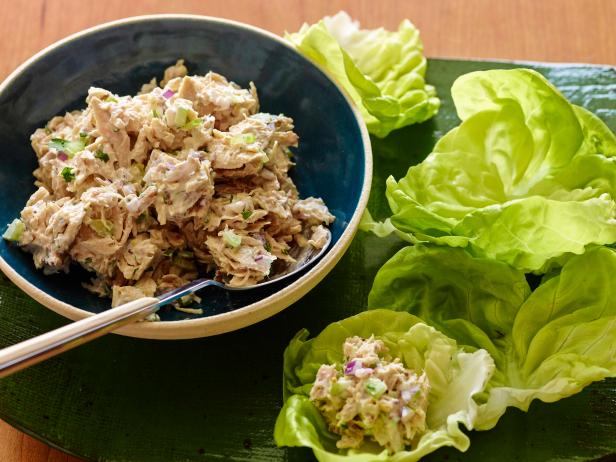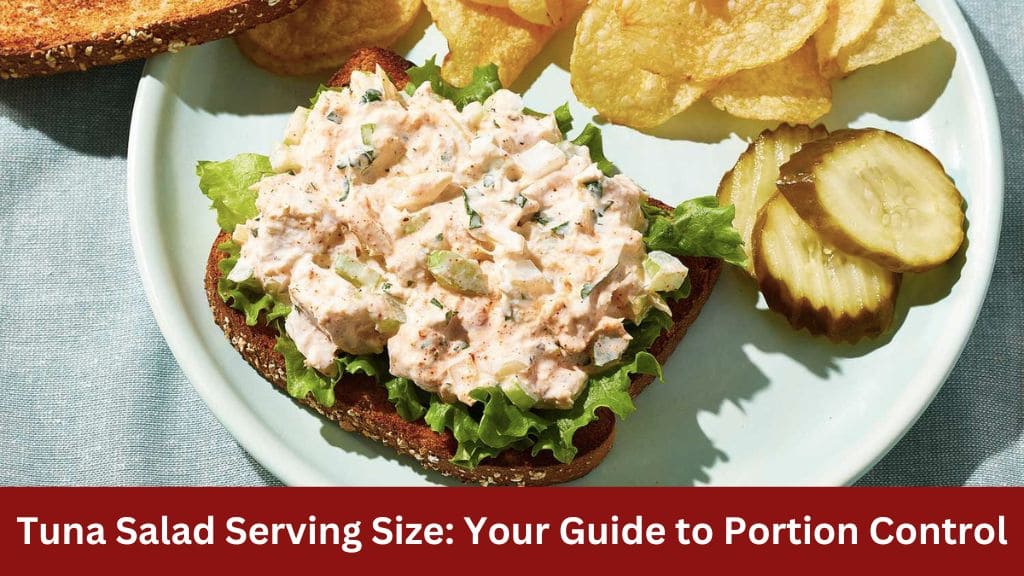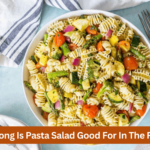Tuna salad is a popular dish enjoyed for its versatility, convenience, and nutritional benefits. However, determining the appropriate serving size can sometimes be confusing. In this comprehensive guide, we’ll delve into the various factors that influence the serving size of tuna salad and provide practical tips for portion control.
Understanding Serving Sizes

Importance of Serving Sizes
- Nutritional Balance: Proper portion control helps ensure that you’re getting a balanced mix of nutrients from your meals. Tuna salad typically contains protein from the tuna, fats from ingredients like mayonnaise, and carbohydrates from any added vegetables or grains.
- Caloric Control: Monitoring serving sizes is key to managing caloric intake, especially if you’re trying to maintain or achieve a healthy weight. Consuming portions that align with your energy needs can prevent overeating and promote weight management.
- Dietary Goals: Serving sizes can vary based on individual dietary goals. For example, someone looking to lose weight might aim for smaller portions, while an athlete in training might require larger servings to meet their energy demands.
- Nutrient Density: Understanding serving sizes helps you assess the nutrient density of your meals. By choosing appropriate portions, you can maximize the nutritional value of your food choices and optimize your overall health.
Factors Influencing Serving Sizes
Several factors can influence the appropriate serving size of tuna salad:
- Ingredients: The ingredients used in the tuna salad can significantly impact serving sizes. For example, a salad made with lean tuna, light mayonnaise, and plenty of vegetables may have a larger serving size compared to one with higher-fat ingredients.
- Preparation Methods: The way the tuna salad is prepared can also affect serving sizes. Creamier salads with more mayonnaise or added oils may have smaller serving sizes compared to lighter, more vegetable-packed versions.
- Accompaniments: Consider any additional foods or condiments served alongside the tuna salad. For instance, if you’re pairing the salad with bread or crackers, you may need a smaller portion to maintain balance.
- Personal Preferences: Individual preferences and appetites play a role in determining serving sizes. Some people may feel satisfied with a smaller portion, while others may require a larger serving to feel full and satisfied.
Tailoring Serving Sizes
Tailoring serving sizes to your specific needs and preferences is essential for maintaining a healthy diet. Here are some strategies for adjusting serving sizes:
- Listen to Your Body: Pay attention to hunger and fullness cues to determine how much tuna salad you need to feel satisfied. Stop eating when you feel comfortably full.
- Experiment with Portions: Experiment with different portion sizes to find what works best for you. You may discover that smaller servings are sufficient, or you may need larger portions to meet your energy requirements.
- Consider Context: Take into account the context of your meal when determining serving sizes. If you’re having a light lunch, you may need a larger portion of tuna salad to feel satisfied. However, if it’s part of a larger meal, a smaller serving may suffice.
- Balance Macronutrients: Aim for a balance of macronutrients in your tuna salad portion, including protein, carbohydrates, and fats. Adjust ingredient quantities accordingly to achieve this balance.
Calculating Serving Sizes

Steps for Calculating Serving Sizes
Follow these steps to calculate the serving size of tuna salad effectively:
- Review Nutritional Information: Start by reviewing the nutritional information for the tuna salad, including the serving size and calorie count per serving. This information is typically found on the product packaging or in recipe measurements.
- Consider Your Dietary Goals: Take into account your personal dietary goals and preferences when determining the appropriate serving size. For example, if you’re trying to lose weight or manage your calorie intake, you may opt for a smaller portion size.
- Factor in Accompaniments: Consider any additional foods or accompaniments that you plan to enjoy with the tuna salad. If you’re serving it with bread, crackers, or a side salad, adjust the serving size of the tuna salad accordingly to ensure a balanced meal.
- Use Measuring Tools: When in doubt, use measuring cups, spoons, or a food scale to portion out the desired serving size accurately. This ensures consistency and helps prevent overeating.
Adjusting Serving Sizes
Depending on your specific needs and preferences, you may need to adjust the serving size of tuna salad. Here are some considerations for making adjustments:
- Energy Requirements: Take into account your individual energy requirements based on factors such as age, gender, activity level, and weight management goals. If you lead an active lifestyle or have higher energy needs, you may require larger serving sizes to fuel your body adequately.
- Nutritional Composition: Pay attention to the nutritional composition of the tuna salad, including the amounts of protein, fat, and carbohydrates per serving. Adjust portion sizes to align with your macronutrient goals and dietary preferences.
- Meal Timing: Consider the timing of your meal when determining serving sizes. For example, if you’re eating tuna salad as a light lunch, you may opt for a smaller portion. However, if it’s part of a larger meal or eaten after a workout, you may need a larger serving to satisfy your hunger.
- Satiation Level: Pay attention to your body’s hunger and satiety cues to determine the appropriate serving size. Stop eating when you feel comfortably full and satisfied, even if there is food remaining on your plate.
Monitoring Portion Sizes
Once you’ve calculated the serving size of tuna salad, it’s essential to monitor your portion sizes consistently. Here are some tips for maintaining portion control:
- Practice Mindful Eating: Take your time to savor each bite of tuna salad, paying attention to flavors, textures, and sensations. Eating mindfully can help you recognize feelings of fullness and prevent overeating.
- Use Visual Cues: Familiarize yourself with common portion sizes by visualizing them in relation to everyday objects. For example, a serving of tuna salad may be roughly the size of a tennis ball or the palm of your hand.
- Keep Track of Portions: Consider keeping a food journal or using a mobile app to track your portion sizes and monitor your dietary intake. This can help you stay accountable and make adjustments as needed.
Practical Tips for Portion Control
:max_bytes(150000):strip_icc()/__opt__aboutcom__coeus__resources__content_migration__simply_recipes__uploads__2020__04__Tuna-Salad-for-Two-LEAD-8-8c36ee87a2d24621bca53ff1f85e5627.jpg)
Measure Ingredients Carefully
When preparing tuna salad, use measuring cups, spoons, or a food scale to portion out the ingredients accurately. This ensures that you’re adding the right amounts of tuna, mayonnaise, and any other ingredients, helping you control portion sizes effectively.
Use Smaller Plates and Bowls
Opt for smaller plates and bowls when serving tuna salad. Research suggests that using smaller dishware can trick your brain into perceiving larger portions, leading to greater satisfaction with smaller servings. This can help prevent overeating and promote portion control.
Focus on Balance
Create a balanced meal by pairing your tuna salad with plenty of vegetables, whole grains, and healthy fats. Aim to fill half of your plate with vegetables, one-quarter with protein-rich foods like tuna salad, and one-quarter with whole grains or starchy vegetables. This balanced approach ensures that you’re getting a variety of nutrients and flavors in your meal.
Practice Mindful Eating
Eat tuna salad mindfully by paying attention to each bite and savoring the flavors and textures. Chew slowly and take breaks between bites to give your body time to register feelings of fullness. Mindful eating can help you enjoy your meal more fully and prevent overeating by promoting greater awareness of hunger and satiety cues.
Avoid Mindless Snacking
Be mindful of mindless snacking, especially if you have leftover tuna salad. Instead of grazing throughout the day, portion out a single serving of tuna salad and enjoy it as a satisfying meal or snack. Avoid eating directly from the container, as this can lead to consuming larger portions without realizing it.
Pre-portion Servings
Consider pre-portioning servings of tuna salad ahead of time for easy grab-and-go meals or snacks. Divide the salad into individual containers or portion out servings onto plates to ensure that you’re consuming the right amount. Pre-portioning can help prevent overeating and make it easier to stick to your portion control goals.
Listen to Your Body
Pay attention to your body’s hunger and fullness cues to determine when you’ve had enough tuna salad. Stop eating when you feel comfortably full, even if there’s food remaining on your plate. Tuning into your body’s signals can help you avoid overeating and maintain a healthy relationship with food.
Conclusion
Determining the appropriate serving size of tuna salad is essential for maintaining a healthy and balanced diet. By considering factors such as caloric content, nutritional composition, and personal dietary goals, you can enjoy tuna salad as part of a nutritious meal plan. With mindful portion control and practical tips for managing serving sizes, you can savor the delicious taste of tuna salad while supporting your overall health and wellness.





